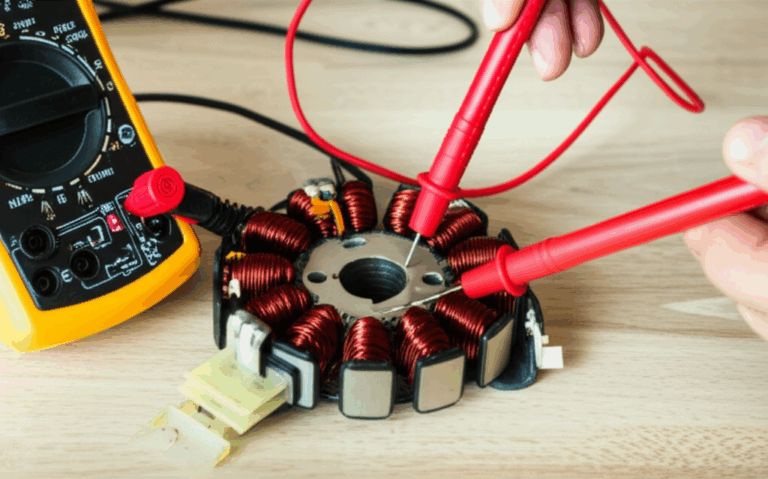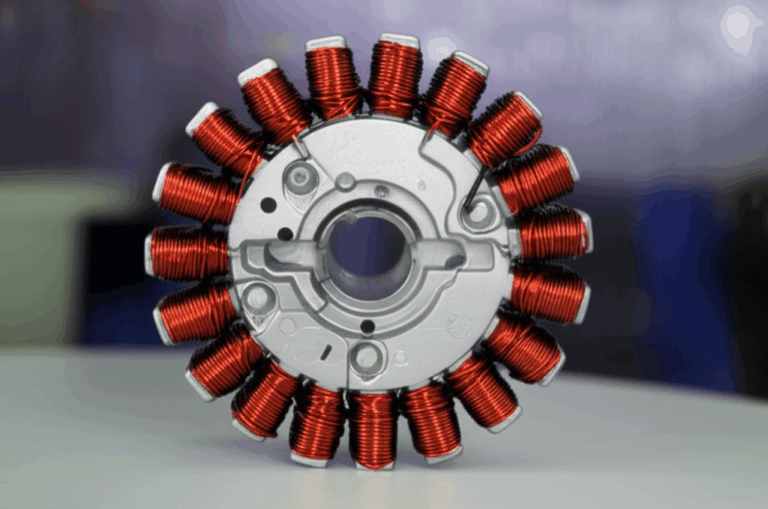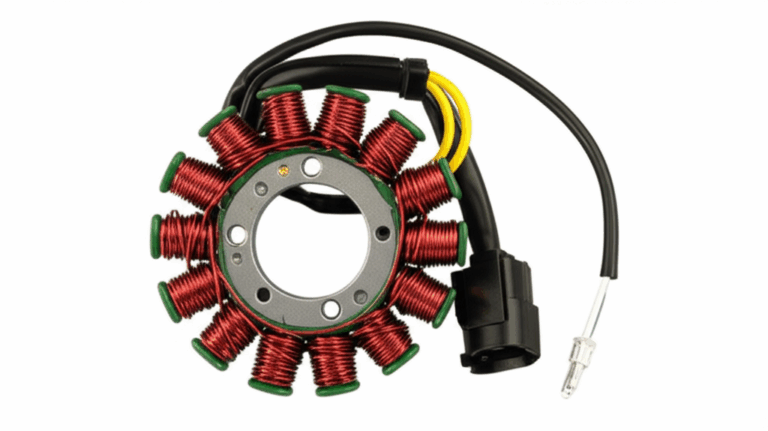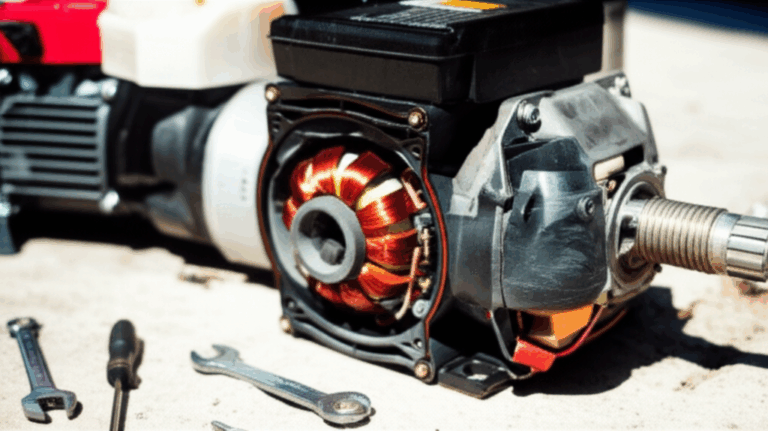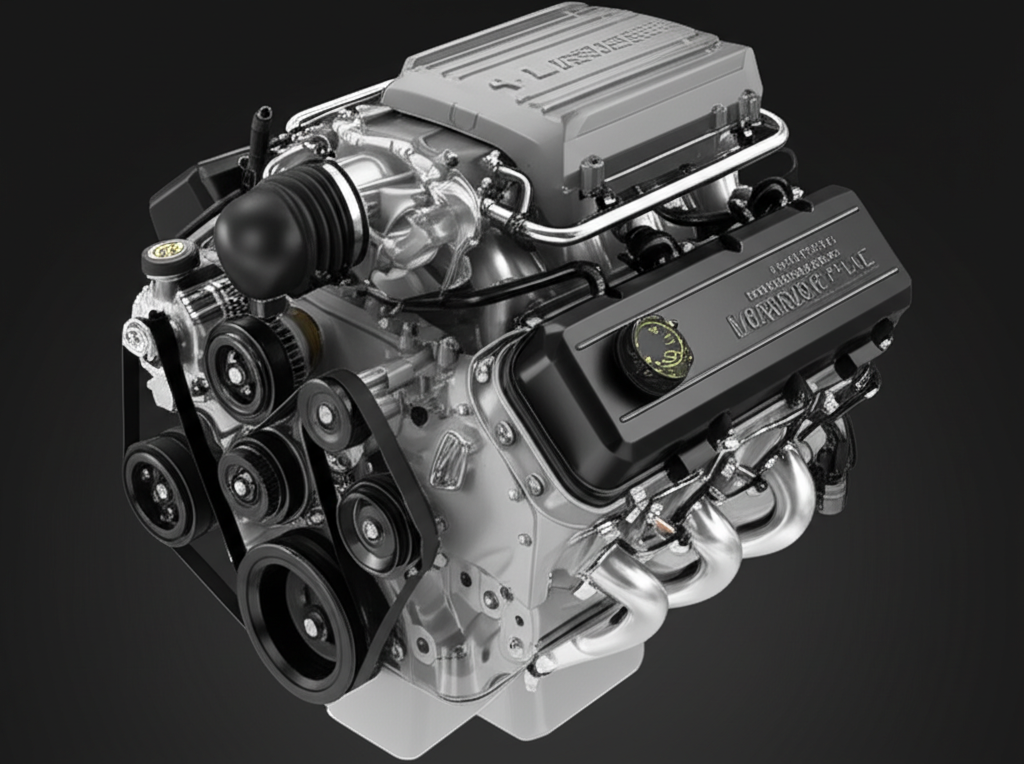
What Is an LS1 Motor? The Definitive Guide From My Garage to Yours
Table of Contents
- Introduction: What I Mean When I Say “LS1”
- A Brief History and Origins of the LS1
- The Birth of the Gen III Platform
- Key Innovations Over Previous Small Blocks
- First Appearance in the 1997 C5 Corvette
- LS1 Specifications: Power, Displacement, and Core Details
- Displacement
- Horsepower and Torque Output
- Bore and Stroke
- Compression Ratio
- Redline and RPM Behavior
- Weight and Dimensions in the Real World
- Design and Key Technologies of the LS1
- All-Aluminum Construction
- Cylinder Head Design: Cathedral Ports
- Valvetrain and Lifters: Pushrods Done Right
- Fuel and Ignition Systems
- Drive-by-Wire Throttle
- Oiling and Cooling: What I Watch
- Vehicles That Used the LS1
- Chevrolet Corvette C5 (1997–2004)
- Chevrolet Camaro Z28/SS (1998–2002)
- Pontiac Firebird Formula/Trans Am (1998–2002)
- Pontiac GTO (2004)
- Cadillac CTS-V Context
- Holden Commodore and Monaro (Australia)
- Why the LS1 Still Rules Garages Today
- Performance Potential
- Reliability and Durability
- Aftermarket Support
- Engine Swaps
- Cost-Effectiveness
- Popular LS1 Mods and Upgrade Paths
- Intake and Exhaust
- Camshaft Swaps
- Forced Induction: Superchargers and Turbos
- Tuning and ECU/PCM Upgrades
- Cylinder Heads and Bottom End Work
- Transmissions: T-56 and 4L60E Pairings
- LS1 Strengths and Weaknesses
- What It Does Best
- What To Watch For
- Maintenance Tips That Help
- LS1 vs Other LS Engines: LS2, LS3, and LT1
- Buying and Identifying an LS1
- Production Years and Applications
- Engine Codes and Casting Clues
- Used LS1 Market and Cost
- Standalone Harness and Swap Considerations
- Engine vs Motor: Clearing Up the Name
- Conclusion: The Enduring Legacy of the LS1
Introduction: What I Mean When I Say “LS1”
When someone asks me what an LS1 motor is, I smile. I’ve heard that question from friends, customers, and curious neighbors leaning over a fender. In plain English, the LS1 is General Motors’ Gen III small block V8. It displaces 5.7 liters or 346 cubic inches. It uses an aluminum block with aluminum heads. It arrived in the late 1990s and reset the bar for power, weight, and reliability in a pushrod package.
Why it matters. The LS1 sparked a wave of LS-series engines. It shaped an era of performance cars like the C5 Corvette, F-body Camaro and Firebird, and it kicked off a swap culture that still fills my weekends. It’s compact, light, tough, and friendly to mods. That combination built a legend.
A Brief History and Origins of the LS1
The Birth of the Gen III Platform
Before the LS1, GM relied on small blocks that traced roots back decades. They made power and they sounded great. They also carried old design baggage. In the mid 1990s GM needed a clean-sheet V8 to compete. The result became the Gen III small block platform. The LS1 led the charge in 1997.
Key Innovations Over Previous Small Blocks
The LS1 looked familiar on paper. A 90-degree V8 with two valves per cylinder and pushrods. Under the covers it moved the game forward. GM designed a deep-skirt aluminum block with 6-bolt main bearing caps. They stiffened the bottom end. They improved oil control. They introduced coil-on-plug ignition and sequential fuel injection. The cylinder heads used efficient cathedral ports that breathed well at low and mid lift. Weight dropped. Power rose. Efficiency improved. That mix felt new even if the pushrod layout stayed old-school.
First Appearance in the 1997 C5 Corvette
I still remember the first time I rode in a 1997 C5. The LS1 felt eager. It pulled hard through the midrange and never felt heavy. GM rated that early Corvette at 345 horsepower and 350 lb-ft. The numbers told part of the story. The way it delivered torque sold the rest.
LS1 Specifications: Power, Displacement, and Core Details
Displacement
The LS1 displaces 5.7 liters. That’s 346 cubic inches. Every factory LS1 shares that base displacement.
Horsepower and Torque Output
The factory ratings varied by application and model year.
- Corvette C5: 345 hp at 5600 rpm from 1997 to 2000. 350 hp at 5600 rpm from 2001 to 2004. Torque landed at 350 to 360 lb-ft at 4400 rpm.
- Camaro/Firebird F-body: Lower on paper in 1998 at 305 to 320 hp. Later years rose to 325 hp. The 2001–2002 SS and WS6 saw ratings that touched 345 hp. Many cars dynoed higher than the brochure suggested.
- 2004 Pontiac GTO: 350 hp at 5200 rpm and 365 lb-ft at 4000 rpm.
On the street the LS1 feels like a flat torque curve. You squeeze the pedal and it moves. That’s what owners notice first.
Bore and Stroke
Bore measures 3.898 inches. Stroke comes in at 3.622 inches. In metric that’s 99 by 92 mm. The combo gives a balanced character. It revs cleanly to 6000 plus. It also builds solid low and midrange torque.
Compression Ratio
Factory compression typically runs between 10.1:1 and 10.5:1. That bump over earlier small blocks helps power and thermal efficiency. It also means the engine likes good fuel when you add timing with a tune.
Redline and RPM Behavior
Most stock LS1s live around a 6000 to 6200 rpm redline. The heads keep flowing up high. The valvetrain stays calm thanks to short pushrods and roller lifters. Cam upgrades and valve springs move that limit up when you want to chase power.
Weight and Dimensions in the Real World
Fully dressed LS1s land near 430 pounds. That’s light for a V8. The compact external size makes swaps easier than you’d think. You can squeeze one into an engine bay that hates bulky DOHC V8s.
Design and Key Technologies of the LS1
All-Aluminum Construction
The LS1 uses a cast aluminum block and aluminum heads. Shedding iron changes handling and weight balance in cars like the C5 Corvette. It also helps cooling and warm-up times. GM used deep skirts and six-bolt mains to keep the block rigid under load.
Cylinder Head Design: Cathedral Ports
Early LS heads used narrow cathedral-shaped intake ports. Typical LS1 castings include 853 and 241 numbers. These heads shine at low and mid-lift flow. That trait shapes the torque curve. Later LS engines like the LS3 switched to rectangular ports for more peak flow. For street builds I love cathedral ports because they make cars feel snappy.
Valvetrain and Lifters: Pushrods Done Right
Yes it’s a pushrod engine. No that doesn’t mean dinosaur tech. The LS1 uses roller lifters with a single in-block camshaft. The short pushrods and efficient port angles give the LS1 a stable valvetrain. With the right springs and a mild cam you can spin it safely and make big gains without drama.
Fuel and Ignition Systems
Every LS1 came with sequential port fuel injection. It also ditched a single coil and distributor for coil-on-plug ignition. That change tightened timing control. It improved idle quality. It made tuning cleaner. Spark duration improved. Misfire resistance did too. When I diagnose rough running LS1s I check coils and plug wires first because they’re simple to test and easy to replace.
Drive-by-Wire Throttle
Some LS1 applications moved from a cable throttle to drive-by-wire. Later C5 Corvettes and the 2004 GTO used DBW hardware and matching PCMs. DBW lets you shape throttle response in the tune. It also plays nice with traction control. Swappers often pick a drive-by-cable intake and throttle body for simplicity. I choose DBW if I want modern cruise control and a clean idle with big cams.
Oiling and Cooling: What I Watch
The LS1’s oiling system works well in stock form. Track days change the game. I’ve seen high-G corners uncover pickups in pans that were not designed for slicks. A good baffle or a road race pan saves bearings. Cooling stays solid in street use. Keep the radiator clean. Use a healthy water pump. Replace aging thermostats and check steam vent lines after a build. Little things keep temps stable.
Vehicles That Used the LS1
Chevrolet Corvette C5 (1997–2004)
The C5 launched the LS1. Early cars carried 345 hp. From 2001 on they bumped to 350 hp with small internal improvements. The combination of a lightweight aluminum block and a balanced chassis put the C5 on the map. I still recommend a stock C5 to people who want a reliable car that hits every note.
Chevrolet Camaro Z28/SS (1998–2002)
In 1998 GM stuffed the LS1 into the F-body Camaro. The numbers looked conservative because GM wanted the Corvette to remain the hero. On the street those Camaros ran strong. Headers and a tune woke them up. A mild cam turned them into highway monsters.
Pontiac Firebird Formula/Trans Am (1998–2002)
Same story. Different badge and a louder hood. I’ve dynoed bone-stock WS6 cars that surprised owners and me. Pontiac rated them near 325 hp in many years. The rollers told a happier story.
Pontiac GTO (2004)
The 2004 GTO used the LS1. It landed with 350 hp and a quiet interior. Think sleeper vibes. It felt mature. It also responded to the same bolt-ons I knew well. Headers, intake, tune, and you had a fast, comfortable daily.
Cadillac CTS-V Context
The first-gen CTS-V used a 5.7 liter LS-series engine. It was the LS6 not the LS1 in the U.S. market. I include it here because people often ask and the parts look familiar. The LS6 was a higher-compression, better-breathing sibling. Many LS1 upgrade paths borrow LS6 parts with great results.
Holden Commodore and Monaro (Australia)
Holden kept the LS1 in production a bit longer for models like the VT–VZ Commodore and the Monaro. Australia gave the LS1 a second home. That global footprint helped the aftermarket grow even faster.
Why the LS1 Still Rules Garages Today
Performance Potential
Stock power feels good. The headroom feels better. Cam and headers pick up 50 to 100 plus horsepower on pump gas with a proper tune. Bolt a supercharger or turbo kit on a healthy engine with smart fueling and timing. You can see 500 to 700 plus at the crank. That is serious shove from factory internals when you keep detonation away.
Reliability and Durability
The LS1 earned a reputation for endurance. I’ve seen engines with 150,000 to 200,000 miles still hold solid compression with basic maintenance. The deep-skirt block and 6-bolt mains help the bottom end. Keep the tune safe and oil clean. It lives a long time.
Aftermarket Support
The LS1 kicked off a parts ecosystem that borders on endless. You can buy intakes, cams, springs, headers, stand-alone harnesses, swap mounts, you name it. You can tune it with popular software and a basic laptop. You can find countless dyno graphs and build recipes in forums and videos. That support lowers cost and risk for beginners.
Engine Swaps
Why does every swap thread mention LS engines. Packaging and simplicity. The LS1 is compact and light. It plays nice with a T-56 manual or a 4L60E automatic. Stand-alone PCMs make wiring straightforward. You can drop one into classic muscle or an import with a little fabrication and some patience. It just works.
Cost-Effectiveness
Used LS1s still command money. They remain cheaper than many newer DOHC V8s. They respond to cheap mods. That combination makes them hard to beat for budget performance.
Popular LS1 Mods and Upgrade Paths
Intake and Exhaust
I start with breathing. A quality cold-air intake sets the table. Long-tube headers and a free-flowing exhaust uncork the midrange. Pair those with a better Y-pipe on F-bodies or a true dual setup where it fits. Gains come quick. The LS1 responds with more torque everywhere.
Camshaft Swaps
A cam changes the game. Pick a profile that matches your goals. Mild street cams keep excellent manners and add 40 to 70 hp with supporting springs and a tune. Bigger sticks love compression and rpm. They need stronger springs and sometimes pushrods. I always measure piston-to-valve clearance on aggressive builds. Cheap insurance.
Forced Induction: Superchargers and Turbos
If you want torque on tap, a positive displacement blower delivers. Centrifugal superchargers feel like a rising wave. Turbos offer huge power per dollar if you handle heat and plumbing. The stock bottom end can hold 500 to 600 wheel horsepower with a very careful tune and high-octane fuel. More than that calls for better rods, pistons, and tight control of air and fuel.
Tuning and ECU/PCM Upgrades
You don’t get the most from hardware without a good tune. I use well-known tuning software to dial in MAF curves, VE tables, spark maps, idle airflow, and fan control. Some LS1s came with drive-by-wire and matching PCMs that offer more features. Others use cable throttle and PCMs that are easy to reflash. A stand-alone harness cleans up swaps. Label connectors and keep grounds clean. That avoids the weird gremlins that waste weekends.
Cylinder Heads and Bottom End Work
Cathedral port heads respond to a quality valve job and mild port cleanup. Aftermarket CNC heads take flow to another level. Pair ported heads with a cam that complements their flow curve. If you plan big boost or nitrous you should think about forged pistons and rods. The stock LS1 crank is a cast unit not forged steel. It lives at moderate power with a safe tune. Go forged when you want to stack abuse.
Transmissions: T-56 and 4L60E Pairings
The T-56 manual belongs with the LS1 like peanut butter and jelly. It takes abuse when you shift clean. The 4L60E automatic gets a bad rap when people push big torque with stock internals. Build it right or pick the right converter and tune the shifts. It’s fine for street duty and mild power upgrades.
LS1 Strengths and Weaknesses
What It Does Best
- Power-to-weight that embarrasses older iron-block V8s
- Compact size that makes swaps simple
- A torque curve that feels flat and friendly
- Huge aftermarket and community support
- Reliable bottom end for street and track when tuned safely
What To Watch For
- Early 1997–1998 engines sometimes exhibit piston slap at cold start
- Oil consumption pops up in some 1997–2000 engines
- High-mile heads can seep at gaskets after heat cycles
- Stock valve springs tire out with age and rpm
- Track use can starve the pan without baffles
None of these issues scare me off. They’re known. Fixes exist. I factor them into price and plans.
Maintenance Tips That Help
- Use the right oil weight. 5W-30 synthetic works well in most climates for stock engines
- Replace spark plugs and wires on schedule because coil-on-plug systems still like fresh ignition parts
- Keep the cooling system healthy and purge steam ports after service
- Watch fuel trims and O2 sensor behavior. A scan tool tells stories long before your ears do
- Change PCV components if you see rising oil use. Cheap parts save messes
LS1 vs Other LS Engines: LS2, LS3, and LT1
People ask me where the LS1 sits in the LS family. Here’s how I explain it.
- LS1 vs LS2: The LS2 is Gen IV. It grows to 6.0 liters with more displacement and torque. It typically uses better heads and raises compression. It makes more power stock. It also costs more in many markets.
- LS1 vs LS3: The LS3 is 6.2 liters with rectangular-port heads that flow big up top. It’s a beast factory fresh. It also weighs a bit more and can cost a lot more.
- LS1 vs LT1 (1990s vs Gen V): The 1990s LT1 preceded the LS1 with reverse-flow cooling and iron blocks in most trims. The modern Gen V LT1 in C7 Corvettes and late Camaros uses direct injection and a different architecture. Apples and oranges. The LS1 sits between those eras as the engine that modernized the pushrod V8.
I like the LS1 because it balances cost, weight, and simplicity. The bigger Gen IV and Gen V engines outgun it. They don’t always outvalue it for budget builds.
Buying and Identifying an LS1
Production Years and Applications
U.S. production ran 1997 through 2004 in the Corvette and into 2002 for F-bodies. The 2004 GTO used it. Holden in Australia kept it in certain Commodores and Monaros through the mid 2000s. By 2005 most U.S. models had switched to the LS2.
Engine Codes and Casting Clues
Look for 241 and 853 head castings on many LS1s. Find the VIN derivative on the block pad near the head. Check intake manifold style to spot drive-by-wire vs cable. The LS1 typically uses a 24x crank reluctor. Later Gen IV engines often use 58x. That matters for PCM compatibility in swaps.
Used LS1 Market and Cost
Supply and demand swings with trends. Prices also depend on condition and what’s included. Long blocks cost more than short blocks. A complete pull-out with PCM, harness, accessories, and either a T-56 or 4L60E commands the most. Budget for a refresh. Gaskets, timing set, oil pump, sensors, plugs, and wires. Little parts turn a mystery engine into something you trust.
Standalone Harness and Swap Considerations
For swaps I like a stand-alone harness. It cuts clutter. It also reduces mistakes. Label every connector. Mount the PCM away from heat. Keep grounds short and clean. Use proper fuel system components for return or returnless setups depending on your PCM and rail choice. Take your time on exhaust and O2 bung placement. Accurate data makes tuning easy.
Engine vs Motor: Clearing Up the Name
You’ll hear people say engine and motor interchangeably. In car culture motor often means engine. If you came from the EV world this gets confusing. Electric motors use a stator and a rotor with thin steel sheets called laminations. Those parts reduce eddy current losses and improve efficiency at speed. If you’re curious about how that works you can dig into the structure of a stator core lamination. You can also see how a rotor core lamination complements the stator in a typical motor. Both rely on precise electrical steel laminations to control magnetic flux and heat. The LS1 uses gasoline, pistons, and valves. Different universe. Same passion for clever engineering.
Conclusion: The Enduring Legacy of the LS1
When I think about the LS1 I think about an engine that made V8s feel fresh again. It brought aluminum blocks, smart heads, and modern controls to the masses without losing the soul of a burly V8. It’s light and compact. It responds to simple mods. It takes abuse if you respect the tune. It fits in places that make purists shake their heads and tinkerers grin.
If you want to learn, build, and drive your project without drowning in complexity start with an LS1. Explore LS1-powered C5s and F-bodies to feel the stock magic. Then consider an LS1 swap if you want to wake up something older. You’ll find parts. You’ll find guides. You’ll find a community ready to help and a V8 that rewards your time with every throttle squeeze.
Along the way you’ll answer the original question for yourself. What is an LS1 motor. It’s the 5.7 liter Gen III small block that changed everything for GM and for a lot of us who love fast, dependable cars.

